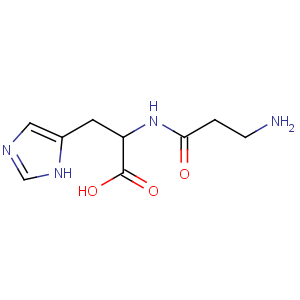Title: Ribonuclease
CAS Registry Number: 9001-99-4
Synonyms: RNase
Literature References: An enzyme that digests RNA. First isolated from beef pancreas in 1920. Crystallization from acid extracts of pancreas: Kunitz,
J. Gen. Physiol. 24, 15 (1940). Isoln: Kunitz, McDonald,
Biochem. Prep. 3, 9 (1953). Bovine pancreatic RNase A is a single-chain peptide of 124 amino acid residues. Primary structure: C. H. W. Hirs
et al., J. Biol. Chem. 235, 633 (1960). Amino acid sequence: D. H. Spackman
et al., ibid. 648. Pictorial representation of entire structure: Stein, Moore,
Sci. Am. 204, no. 2, 81-92 (Feb. 1961). Ribonuclease from plant leaves has slightly different characteristics: Markham, Strominger,
Biochem. J. 64, 46P (1956). Can be obtained as a by-product of microbial erythromycin production:
JP 63 26938 (1963 to Shionogi). Chemical synthesis of materials possessing partial RNase enzyme activity: Gutte, Merrifield,
J. Am. Chem. Soc. 91, 501 (1969); Denkewalter, Hirschmann
et al., ibid. 502. Series of articles describing the total synthesis of a protein having the full enzymic activity of bovine pancreatic RNase: N. Fujii, H. Yajima,
J. Chem. Soc. Perkin Trans. 1 1981, 789-841. Specifically catalyzes the cleavage of the phosphodiester bond between the 3¢ and 5¢ positions of the ribose moieties in RNA with the formation of oligonucleotides terminating in 2¢,3¢-cyclic phosphate derivs: Roberts
et al., Proc. Natl. Acad. Sci. USA 62, 1151 (1969).
Reviews: Anfinsen, White,
The Enzymes vol. 5, P. D. Boyer
et al., Eds. (Academic Press, New York, 2nd ed., 1961) pp 95-122; Richards, Wyckoff,
ibid. vol. 4 (3rd ed., 1971) pp 647-806.
Properties: Crystals. [a]D25 (per mg N) -0.47° (c = 5). uv max (0.1
M KCl soln): 277.5 nm (e 9700). Isoelec pt about pH 8.0. Freely sol in water. Aq solns of cryst ribonuclease are quite stable at temps below 25°. The region of maximum stability is between pH 2 and 4.5. Stable for years stored as refrigerated dry powder or in frozen soln. Aggregates on lyophilization and storage. Shows affinity for glass surfaces. The optimum temp for digestion of yeast ribonucleic acid is 65°. The optimum pH is 7.7. Inhibited by heavy metal ions; by magnesium ions at concns as low as 0.0005
M. Competitively inhibited by DNA, the effect of denatured DNA being greater than that of the native nucleic acid. Ribonuclease is precipitated by trichloroacetic acid, and does not diffuse through collodion or cellophane.
Optical Rotation: [a]D25 (per mg N) -0.47° (c = 5)
Absorption maximum: uv max (0.1
M KCl soln): 277.5 nm (e 9700)

